
Introduction
Education and literacy are important aspects of socio-economic development of Ghana. They enhance the acquisition of knowledge, skills, values and attitudes that facilitate the development of individual capacities for socio-economic well-being. The 2010 census collected data on literacy and formal education of the population. Data on formal education were gathered on those attending school or attended school in the past, the highest level reached and grade obtained.
Educational Attainment
The 2010 census results indicate that 666,091 of the population 3 years and older in the region have never been to school. For those who have never been to school, 65.4 percent are females and 34.6 percent are males (Figure 7.1). This implies that more females are illiterate, unable to read and write, than males in the region. For the 1,817,525 persons currently in school, 51.7 percent are males and 48.3 percent are females. As many as 1,902,993 persons 3 years and older or 43.4 percent, have some level of formal education in the past; with females (50.3%) slightly more than the males (49.7%). The fact that the data show more females attended school in the past than males indicate that more males continued their education than females did.
Never Attended School
Table 7.1 shows the population that has never attended school, by district, sex and locality. The region has an average of 15.2 per cent (10.9% of males and 19.2% of females) of the population aged 6 years and older that has never been to school compared with the national average of 23.4 per cent. There has been a drastic reduction of the population that has never been to school in the region, from 33.2 percent in 2000 to 15.2 percent in 2010. This is a positive development in formal education in the region. The population that has never attended school in rural Ashanti is nearly double (21.5%) that of the urban areas (11.2%). Efforts to improve education in the region should target the rural areas more.
With regard to the proportions of the population that have never attended school in the districts, Offinso North (34.1%) has the highest, followed by Ejura-Sekyedumase (33.1%). The lowest proportion is in the Kumasi Metropolis (10.6%) followed by Obuasi Municipal (10.7%)..
Table 7.2 also shows the disparities between the sexes and between urban and rural areas in the districts regarding the proportions that have never attended school. With the exception of Bosome Freho District that has no urban locality, the remaining districts have more females than males who have never attended school in the urban areas, with Ejura-Sekyedumase the highest (33.1%) and Afigya Kwabre the lowest (11.8%). The proportion of males in urban areas who have never attended school is highest in Ejura-Sekyedumase (22.0%), followed by Offinso North (15.0%) and Offinso Municipal (11.2%). In three districts, the proportions are above 10.0 percent, Atwima Mponua and Ahafo Ano South (10.9% each) and Adansi South (10.6%). In 15 districts, the proportions are from 6.0 percent to 9.9 percent. In the remaining six districts, the proportions are below 6.0 percent, with the lowest in Bosomtwi (4.9%). The proportion of females in rural areas that has never attended school is higher than that of males. The highest proportion is 46.9 percent in Offinso North, followed by Ejura-Sekyedumase (42.6%). In six districts, the proportions are between 30.0 percent and 40.0 percent. The lowest proportion is 15.6 percent in Kwabre East.
In rural areas, the proportions of both males and females who have never attended school are much higher than their counterparts in urban areas. The proportion of the rural male population that has never attended school is highest in Offinso North (39.1%) followed by Ejura-Sekyedumase (34.8%); and for females, it is highest in Offinso North (46.9%) followed by Ejura-Sekyedumase (42.6%). The lowest proportion for males is in Kwabre East (6.8%) followed by Ejisu Municipal and Atwima Kwanwoma (8.8% each) and Bosomtwi and Atwima Nwabiagya (9.0% each). For females, the lowest proportion is 15.6 percent in Kwabre East, followed by 17.1 percent in Atwima Nwabiagya and 17.8 percent in Atwima Kwanwoma. Note that Bosome Freho has no urban population and Kumasi Metropolis has no rural population.
Past School Attendance
Table 7.2 shows the distribution of past school attendance and level of education of the population 6 years and older in the districts. About 14.7 percent of this population has only primary education and 31.3 percent has JSS/JHS education. There are disparities among the districts regarding primary school education. For instance, Offinso North has the highest proportion (28.7%) of its population of past education at primary school level, followed by Ejura-Sekyedumase (26.4%), Adansi South (24.7%) and Amansie Central (24.1%), whereas the lowest proportion is in Kumasi Metropolis and Kwabre East (11.6% each), followed by Obuasi Municipal (13.1%), Bosomtwi (13.4%), Atwima Nwabiagya (14.1%) and Ejisu Municipal (14.2%). The proportion of the population that attended JSS/JHS in the past is highest in Amansie West (37.6%) and lowest in Kumasi Metropolis and Obuasi Municipal (29.0% each).
For the population that had secondary education or higher in the past, the proportions are quite low, mostly below 3 percent, with the highest proportions in the Kumasi Metropolis. For those with post-secondary diploma, Obuasi Municipal has a slightly higher proportion (5.0%) than Kumasi Metropolis (4.9%). Among those with post-middle/secondary certificate, Sekyere East has the highest proportion (3.0%), followed by Bekwai Municipal and Sekyere South (2.8% each), Asante Akim North (2.7%), Mampong Municipal and Offinso Municipal (2.6% each), and Ejura-Sekyedumase and Kumasi Metropolis (2.4% each).
Current School Attendance
Table 7.3 shows distribution of current school attendance and educational level for persons 3 years and older by sex and locality. The proportion of the population in nursery is the same (3.0%) for both sexes but slightly higher for males than females in kindergarten. The proportion of females currently in primary and JSS/JHS is more than that of males in both urban and rural areas. Also, the proportion of females currently in vocational, technical and commercial schools is more than that of males in both urban and rural areas. The proportion of males is more than that of females at SSS/SHS, post-secondary diploma, bachelor’s degree and postgraduate education levels
Table 7.4 shows the highest level of school attendance by sex of the population 3 years and older in the districts. The highest level of school attendance by most of the population in the region is primary (24.9%), followed by JSS/JHS (22.2%), middle school (10.7%) and SSS/SHS (9.7%). The lowest level of attendance in terms of proportion of the relevant population is tertiary (0.3%), followed by post-middle/secondary certificate education (1.2%), vocational, technical and commercial education and secondary education (1.4% each) and bachelor’s degree level education (1.8%).
In the districts, primary education is often the highest level attended, except in the Kumasi Metropolis and Obuasi Municipal where the proportions that attended or are attending JSS/JHS are slightly higher. The district with the highest proportion that attended or is attending primary school is Adansi South (30.6%), followed by Amansie Central (30.0%) and Atwima Mponua (29.5%). The district with the lowest proportion of primary school attendance is Kumasi Metropolis (21.8%), followed by Obuasi Municipal (24.4%) and Kwabre East (24.6%).
Among the males and females in the districts, the highest proportion that attended or is attending primary school is in Adansi South, 29.9 percent and 31.2 percent, respectively, followed by Amansie Central 29.5 percent and 30.5 percent, respectively. The lowest proportions for both males and females who attended or attending primary school are in the Kumasi Metropolis (21.8% and 22.8%, respectively), followed by Obuasi Municipal (23.6% and 24.4%, respectively). The proportion of the population that attended or attending JSS/JHS is higher than those who attended middle school because the latter has been replaced essentially by the former.
The proportions of the population that attended or attending SSS/JHS in the districts range from 3.5 percent in the Ahafo Ano South to 13.4 percent in the Obuasi Municipal. The proportion in the Kumasi Metropolis is 13.2 percent. The proportions of the population in the districts who attended or attending other levels of education are quite small, mostly less than 1.0 percent, particularly among the females compared with the males.
Literacy
Introduction
For the 2010 Population and Housing Census, literacy was defined as the ability of a person to read and write a simple statement with understanding in a Ghanaian language, English or French. The data on literacy were collected on household members who were 11 years and older.
Figure 7.2 shows that 82.6 percent of the population 11 years and older in the region are literate. This is higher than the national proportion of 74.1 percent. About 58 percent are literate in both English and a Ghanaian language and 10.7 percent are literate in a Ghanaian language only. Less than 1.0 percent is able to read and write in three different languages, namely, English, French and a Ghanaian language. Those who are literate in English language only constitute 13.2 per cent. A large proportion of the population (71.9%) can read and write in English language and combinations of a Ghanaian language and French and 69.2 per cent can read and write in a Ghanaian language and English or French.
Figure 7.3 shows that the level of literacy in the region has increased greatly for the population 15 years and older, from 65.0 percent in 2000 to 80.4 percent in 2010 which is also higher than the national average (71.5%) in 2010 (GSS 2005, 2000 Population and Housing Census Ashanti Region report). The proportion of population literate in English and a Ghanaian language in the region (56.3%) is also higher than that of the total country (45.8%), although literacy in English only at the national level (18.2%) is higher than in the region (12.1%). Literacy in a Ghanaian language only (10.9%) is also higher than the national proportion (7.0%). About 68.1 percent of the population is literate in a Ghanaian language and combinations of English and French, which suggests that Ghanaian languages are being taken seriously in literacy programmes in the region and show a scaling-up since the 2000 census that recorded about 50 per cent.
Literacy of Population in 2000 and 2010
Figure 7.3 also presents a comparison of the proportion of the literate population 15 years and older in 2000 and 2010. The proportion that is not literate has decreased drastically over the 10-year period, from 35.0 percent to 19.5 percent. Although, the region recorded a slight decrease (0.8%) in the proportion literate in English only from 12.9 percent in 2000 to 12.1 percent in 2010, literacy has generally improved. Literacy in French was not collected in 2000 but the 2010 census shows that at least 1 percent of the regional population can read and write in French.
Literacy levels by District, Age, Sex and Locality of Residence
Table 7.5 shows literacy level of the population 15 years and older in the region by sex and type of locality (urban-rural). Generally, 85.5 percent of the urban population is literate as against 81.7 percent of the rural population. The male population in urban areas (91.1%) is more literate than that in the rural areas (78.9%). Among the female population also, a higher proportion (80.4%) of the literate is in urban areas than in rural areas (65.0%).
Literacy in all three languages is more pronounced in urban areas except Ghanaian language only where proportions are higher in rural areas for both males (6.9% urban and 12.0% rural) and females (11.4% urban and 15.1% rural).
Literacy by Age and Locality of Residence
Table 7.6 shows that among the 11-14 years age group, more females (59.3%) are illiterate than males (40.7%). Considering literacy in English only and a Ghanaian language only, females form the largest proportions, 50.8 percent and 51.8 percent, respectively. The female proportion is also higher than that of male in a literate combination of English, French and Ghanaian language (52.7%). Males dominate in literacy in English and French (51.0%) and English and Ghanaian language (50.4%).
Among the 15-24 years age group (the youth), illiteracy is higher among females (65.8%) than males (34.2%); but in terms of literacy in English language only and a Ghanaian language only females 15-24 years are more literate than males. Being literate in English and a Ghanaian language as well as English and French, is more pronounced among males than females but in terms of ability to read and write in English, French and a Ghanaian language, the proportion of females is slightly higher (50.3%) compared with males (49.7%).
In the 15 years and older age group, the proportion of illiterates is higher among females (67.5%) than males (32.5%) but females have higher proportions in some of the literate categories (English only and Ghanaian language only) and a higher overall proportion of literacy. The proportions of male with ability to read and write in English and a Ghanaian language, English and French as well as English, French and a Ghanaian language among 15 years and older age group are higher than those for their female counterparts.
Table 7.7 shows literacy by age group and locality of residence. Illiteracy is higher among rural dwellers than their urban counterparts in all age groups. Literacy in a Ghanaian language is higher among the rural population in age groups 11-14 years (65.5%) and 15-24 years (51.8%) than the urban population in those age groups, 34.6 percent and 48.2 percent, respectively. However, literacy in a Ghanaian language among the 15 years and older population is higher (54.2%) among the urban population than the rural population (45.8%). Literacy in English only seems to be a phenomenon of the urban for all age groups. Literacy in all combinations thus, English and a Ghanaian language, English and French as well as English, French and a Ghanaian language is higher among the urban population compared with the rural population.
Literacy in the Districts
Table 7.8 shows disparities in literacy in the districts. The illiteracy levels range from 39.4 percent in Ejura-Sekyedumase to 12.3 percent in Kumasi Metropolis. There has been a drastic reduction of illiteracy levels between 2000 and 2010 in the districts – the highest level in 2000 was 61.2 percent is in Ejura-Sekyedumase and the lowest of 22.1 percent in the Kumasi Metropolis.
In 2000, only five out of the 18 districts (Kumasi Metropolis, Kwabre, Adansi West, Ashanti Akim South and Ejisu-Juaben Municipal) had illiteracy levels lower than the regional average of 35.0 percent. In 2010, illiteracy below the regional average of 17.4 percent was found in nine out of 27 districts (Kumasi Metropolis, Obuasi Municipal, Kwabre East, Atwima Nwabiagya, Atwima Kwanwoma, Ejisu Juaben Municipal, Bosumtwi, Afigya Kwabre and Sekyere East). The illiteracy rate in Asante Akim North (17.4%) is the same as the regional average. The highest percentage of those literate in English only is in the Adansi South (16.2%) and the lowest (5.7%) in Amansie Central. The relatively high proportion of persons in the Adansi South (16.2%) and Adansi North (15.1%) as well as Obuasi Municipal (14.5%) literate in English only may be due to the expatriate non-African staff working in the gold mines at Obuasi and the surrounding areas.
The highest proportion of persons literate in both English and a Ghanaian language is in the Kwabre East District (63.9%) with the lowest (39.1%) in the Ejura-Sekyedumase District.
With the exception of Offinso North (6.9%), Offinso (7.4%), Ejura-Sekyedumase (7.5%), Kumasi (8.2%) and Obuasi (9.0%), the proportion of the population literate in a Ghanaian language only in the other districts is higher than the regional average of 10.7 percent. Literacy in French is low in the districts. The proportions of the combination of English and French only range from 0.1 percent in Amansie Central to 0.3 percent in the Kumasi Metropolis. The proportions literate in a combination of English, French and a Ghanaian language are also very low – 10 districts have proportions from 0.5 percent, rising to 1.4 percent in Kumasi Metropolis, while in the rest of the districts the proportions are below 0.5 percent.
Table 7.9 shows language literacy among the male and female populations, 15 years and older in Ashanti Region by district. The proportion of illiterate persons among the female population is higher (25.0%) than that among the male population (13.4%). In all the languages and their combinations, the proportions of literacy among the male population are higher than the proportions among the female population except Ghanaian language only, for which the proportion among the female population (12.7%) is higher than the proportion among the male population (8.8%).
In the districts, the proportion of the male population that is illiterate ranges from a low of 8.3 percent in Kumasi Metropolis to a high of 37.9 percent in Ejura-Sekyedumase. The proportion exceeds 30.0 percent in three districts, namely, Offinso North (37.0%), Sekyere Central (32.9%) and Sekyere Afram Plains (30.4%). In five districts, the proportions of the male population that are illiterate range between 20.0 percent and 30.0 percent. In 13 districts, the proportions are between 10.0 percent and 20.0 percent and in the remaining five districts, the proportions are below 10.0 percent with the lowest in the Kumasi Metropolis (8.3%), followed by Kwabre East (8.6%), Obuasi Municipal (8.7%), Atwima Kwanwoma (9.7%) and Bosomtwi (9.8%).
Among the female population, the proportion that is illiterate in the districts is higher than that of their male counterparts, ranging from a low of 18.3 percent in Kumasi Metropolis to a high of 50.8 percent in Ejura-Sekyedumase. The proportions are between 40.0 percent and 50.0 percent in three districts, namely, Offinso North (49.5%), Sekyere Central (43.1%) and Atwima Mponua (41.7%). In 10 districts, the proportion of the female population that is illiterate is between 30.0 percent and 40.0 percent. In 11 districts, the proportions are between 20.0 percent and 30.0 percent. The proportions are below 20 percent in two districts, namely, Kumasi Metropolis (18.3%) and Obuasi Municipal (19.7%).
Among the population that is literate in English language only in the districts, the proportion among the male population ranges from a low of 4.5 percent in Amansie Central to a high of 15.9 percent in Kumasi Metropolis. Among the female population, the proportion that is literate in English language only is highest in Kumasi Metropolis 14.7 percent and lowest in Amansie Central 5.0 percent. In 12 districts, the proportions are above 10.0 percent and in the majority of 15 districts; the proportions are below 10.0 percent.
The ability to read and write a Ghanaian language only among the male population is highest in Bosome Freho (19.0%) and lowest in Offinso North (5.7%), followed by Ejura-Sekyedumase (6.0%), Offinso Municipal (6.1%), Kumasi Metropolis (6.4%) and Mampong Municipal (6.7%). The proportions of the male population 15 years and older that are literate in English and a Ghanaian language exceed 50 percent in all districts except Offinso North (44.1%) and Ejura-Sekyedumase (43.2%) that have proportions below 50 percent. French literacy among the male population is very low, mostly below 0.5 percent in many districts.
The proportions of the female population that are illiterate range from a high of 50.8 percent in Ejura-Sekyedumase to a low of 18.3 percent in Kumasi Metropolis. This observation is similar to the situation among the male population in the two districts. Literacy in the English language only, among the female population is highest in Kumasi Metropolis (14.7%) and lowest in Sekyere Central (4.9%). Literacy in a Ghanaian language only among the female population is highest in Bosome Freho (22.3%) and lowest in Offinso North (7.1%). Literacy in French among the female population is very low in all districts, mostly below 0.5 percent.
Age-Specific Literacy Rates
Table 7.10 shows age-specific literacy rates among household members. This is computed as a percentage of the total population 11 years and older. There is a consistent increase in the proportions from 1.8 percent for the 11-19 years age group to 50.3 percent for the 50-59 age group and then a decline to 23.9 percent for the age group 70 years and older. The pattern is similar when males and females are considered separately. The proportion increases to a peak for the 50-59 years age group and declines thereafter. However, the age-specific literacy rates are substantially higher among the male age groups than among the female age groups.
Date Created : 7/27/2023 12:00:00 AM


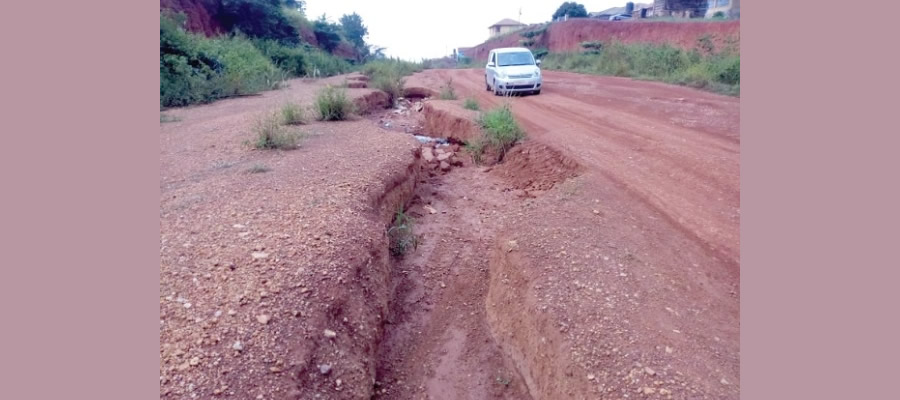
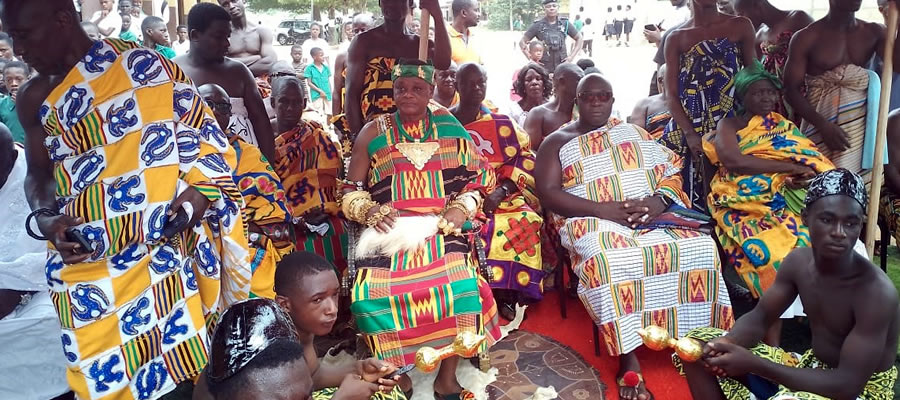
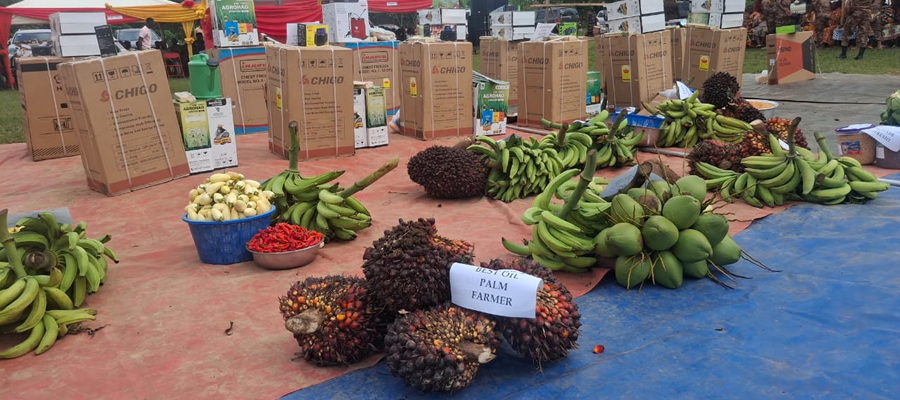
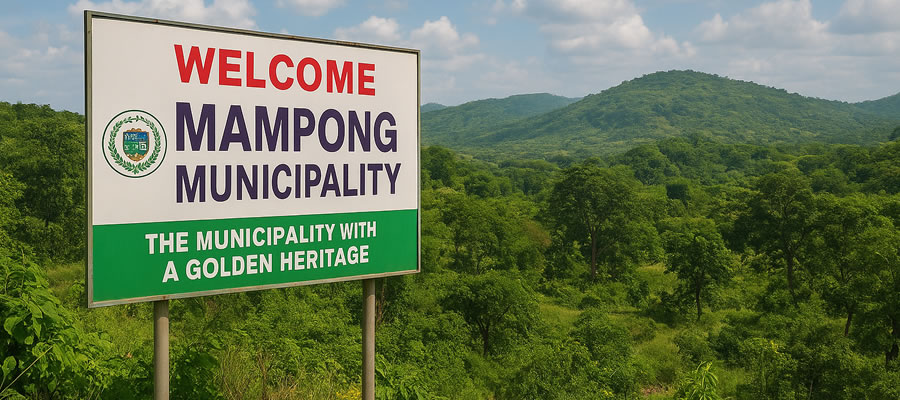
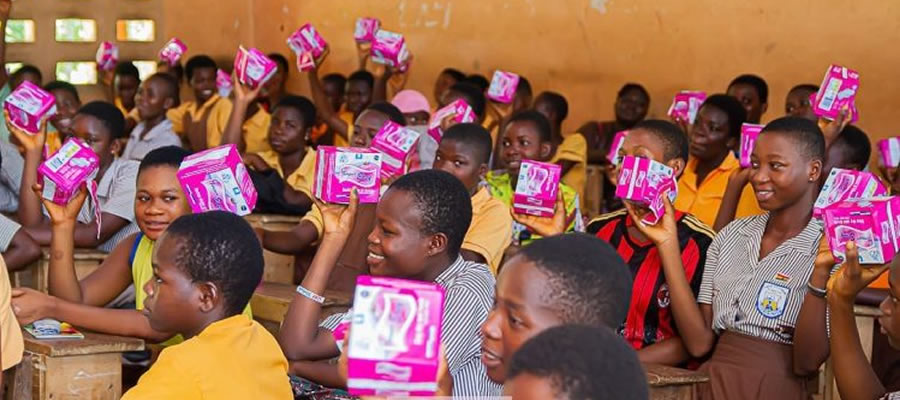

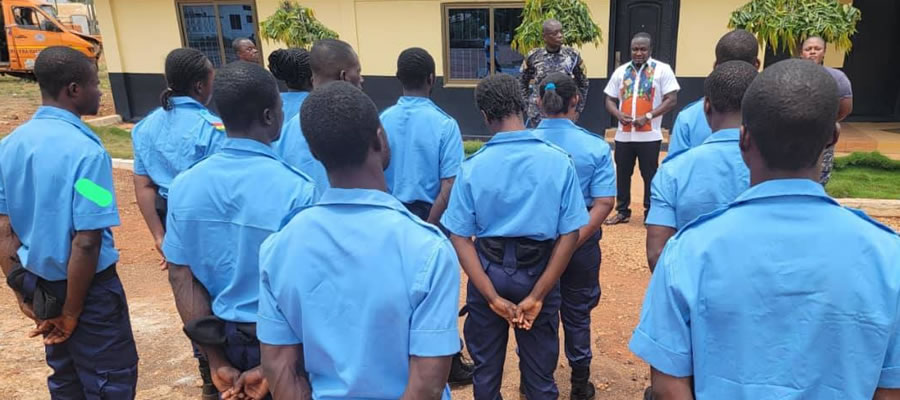



 facebook
facebook
 twitter
twitter
 Youtube
Youtube
 +233 593 831 280
+233 593 831 280 0800 430 430
0800 430 430 GPS: GE-231-4383
GPS: GE-231-4383 info@ghanadistricts.com
info@ghanadistricts.com Box GP1044, Accra, Ghana
Box GP1044, Accra, Ghana